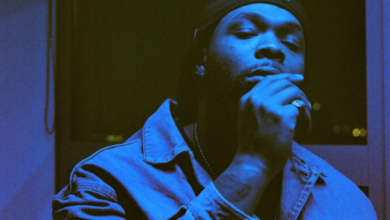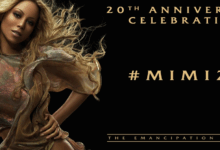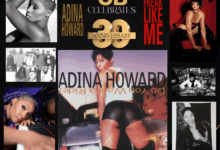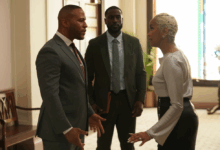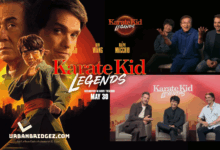
“We Are the World” is a song and charity single originally recorded by the supergroup USA for Africa in 1985. It was written by Michael Jackson and Lionel Richie, and co-produced by Quincy Jones and Michael Omartian for the album We Are the World. Honored numerous times — including three Grammy Awards, one American Music Award and a People’s Choice Award — the song was promoted with a critically received music video, a home video, a special edition magazine, a simulcast, and several books, posters and shirts. The promotion and merchandise aided the success of “We Are the World”, which was eventually named the biggest-selling single of all time.
• Dan Akroyd
• Harry Belafonte
• Lindsey Buckingham
• Kim Carnes
• Ray Charles
• Bob Dylan
• Sheila E.
• Bob Geldof
• Daryl Hall & John Oates
• James Ingram
• Jackie Jackson
• LaToya Jackson
• Marlon Jackson
• Michael Jackson
• Randy Jackson
• Tito Jackson
• Al Jarreau
• Waylon Jennings (left during recording)
• Billy Joel
• Cyndi Lauper
• Huey Lewis & The News
• Kenny Loggins
• Bette Midler
• Willie Nelson
• Jeffrey Osborne
• Steve Perry
• The Pointer Sisters
• Lionel Richie
• Smokey Robinson
• Kenny Rogers
• Diana Ross
• Paul Simon
• Bruce Springsteen
• Tina Turner
• Dionne Warwick
• Stevie Wonder
‘We Are the World’ Associate Producer Thomas Bähler Shares 11 Behind-the-Scenes Stories
1. “We Are the World” mastermind Harry Belafonte stayed in the background.
“Harry is one of the great human beings of all time,” Bähler says. “He’s always been a part of helping people be better, and it was maybe Bob Geldof and him that went to Ken. Harry makes connections and kinda steps back. I barely remember him being there that night. I know he was, because we talked. I love that kinda power. That he could have the power and respect to put all those people together and then just stand back and let it happen. It is the truly great people that I find that are like that.”
2. Quincy Jones strategized an approach to make the process move as smoothly as possible.
“Quincy became the general. He mapped it out as if it were a war,” Bähler remembers. “‘What could go wrong?’ ‘How do we get this accomplished?’ ‘What happens?’ ‘We never had 50 major egos in the same studio. What can we do to keep things on track?’ And it was beautifully orchestrated in terms of what we were going to do.”
3. Diana Ross’s humility shifted the mood in the room.
“Diana Ross is known as one of the big divas of all time, and she’s the one that broke the ice,” Bähler recalls. “When I passed out the music, we put a dummy track on. We were listening to it, getting the feel of it, and while they were rewinding the tape, Diana went over to Darryl Hall and said, ‘Can you sign my music? I’m your biggest fan.’ And as soon as she said that, we all looked at each other and said, ‘Oh my God. Look at who is here.’ We all went around to each other for the next hour-and-a half, signing each other’s music. By the time that was over, we were a family. There was a feeling of love. It was beautiful.”
4. They recorded the group chorus first.
“The way we dealt with it overall was to do the chorus with everybody first, and then excuse the group, and only the people that were singing the solos stayed,” Bähler reveals. “So there was no embarrassment for anybody who wasn’t there who wasn’t picked because they had already been notified.”
5. Cyndi Lauper recorded her line in one take.
“The only funny thing that happened was that Cyndi Lauper was singing at the end of the bridge,” Bähler explains. “We had them line up in a big horseshoe and had their names put on the floor so they knew where to stand. By the time we got around to Cyndi, we’d been singing for a couple hours. When she sang her line at the end of the bridge, Quincy was in the booth. He said, ‘That’s great, Cyndi.’ She said, ‘Wait a minute! Wait a minute! I’ve been waiting for two hours and you’re going to let me sing this once?’ And Quincy said, ‘Come on in here, baby, and listen to this.’ She went into the booth and heard it and said, ‘OK. I’m done.’ So why sing it over and over when you just killed it? It was sweet.”
6. The solos were determined in advance.
“As far as how we were going to deal with the soloists, Quincy had two directions,” Bähler says. “Lionel was the first one to write the song, so he should sing the first line. And Michael co-wrote it, so he should sing the first chorus. Because Diana and Michael were so closely associated – at one time when the boys moved to the West they lived with Diana – that to bring Diana on the first chorus with Michael [made sense]. After that, [Quincy] said, ‘It’s your baby.’ It was fun because I had worked with a lot of the folks in there and the other was just the fact that I was well aware of all of them and their proclivities and how they sang and their talents and it pretty much worked itself out. I just heard. I heard where Steve Perry came in, where the Boss came in. I just followed my instincts.”
7. Ray Charles was most revered in the room.
“I’ve been asked if there was a king? We all decided that there was,” Bähler says. “It was later that we talked about it, and that was Ray Charles. Everybody in there paid homage to Ray and Ray wasn’t looking for it. That wasn’t his thing at all. When you looked around the room and saw who was in there and saw what everyone had done, everybody looked at Ray. It was just a period there we were waiting for something. I think what happened is that Ray sat down at the piano and started singing, and we were all just in awe of him.”
8. Prince was asked to participate.
“I know that Prince was invited, but he didn’t come,” Bähler shares. “Otherwise I would have probably had him in the solo group. ”
9. There was no drama about the guest list.
“I don’t know if any of us really concentrated on that,” Bähler says. “I think we picked people we wanted. We knew there was an editing process. I don’t think there was any special criteria of who to sing other than they were the people that felt right. There were no hard feelings that I knew of. It also helped that the American Music Awards were in Hollywood, and so the people were there. That had a lot to do with it. I think had we had our druthers, if we could pick from anyone in the country, we’d probably had had Aretha there. But Aretha won’t travel. I really don’t recall why people were there; why they weren’t.”
10. Comedian Dan Aykroyd earned his spot in the chorus.
“Dan can sing,” Bähler asserts. “I’ve worked with him before and he sings beautifully.”
11. Diana Ross made a lasting impression.
“One of my favorite memories is that we got there before the sun was down in January,” Bähler says. “We were at A&M Studio. All of the artists came in. They came and they went. Some hung around longer. Quincy, Ken, Diana, and I all walked out of A&M the same time, which was 8 a.m. the next morning. As we’re walking to our cars, we hear this woman crying, and it was Diana. Quincy said, ‘Oh my God, what’s wrong, baby?’ And she said, ‘I don’t want this to be over.’ That’s the memory I’ll hold forever.”





